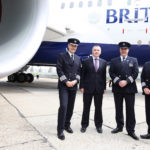
The International Air Transport Association (IATA) forecasts global industry net profit to rise to $38.4 billion in 2018, an improvement from the $34.5 billion expected net profit in 2017, but posited that African airlines despite this improvement would incur a loss of $100 million next year.
This is contained in IATA 2018 forecast made available by the global body presented by IATA’s Director-General and CEO, Alexandre de Juniac, in Geneva, Switzerland.
The forecast stated that Africa’s airlines are expected to continue making a combined loss of $100 million in 2018, i.e. a repeat of this year’s performance. However, stronger forecast economic growth in the region (excluding South Africa, which remains weak) is expected to support demand growth of 8.0% in 2018, slightly outpacing the announced capacity expansion of 7.5%.
The forecast also noted that the slow pace of wider economic improvement in Africa is hampering the financial performance of the continent’s airlines. Nigeria is only just out of recession and growth in South Africa remains extremely weak. As a result, although traffic is growing, the passenger load factors (i.e. the measure of utilised capacity) are just over 70%. This is more than 10% lower than the global industry average.
The combination of low utilisation and high fixed costs make it difficult for airlines to make a profit. Stronger economic growth will help in 2018, but Africa’s governments need to make a concerted effort to free up intra-African access to their markets as the increased connectivity will stimulate wider economic growth.

Overall highlights of expected 2018 performance include a slight decline in the operating margin to 8.1% (down from 8.3% in 2017); an improvement in net margin to 4.7% (up from 4.6% in 2017); a rise in overall revenues to $824 billion (+9.4% on 2017 revenues of $754 billion) and a rise in passenger numbers to 4.3 billion (+6.0% on the 4.1 billion passengers in 2017).
IATA also projected a rise in cargo carried to 62.5 million tonnes (+4.5% on the 59.9 million tonnes in 2017), slower growth for both passenger (+6.0% in 2018, +7.5% in 2017) and cargo (+4.5% in 2018, +9.3% in 2017) demand and average net profit per departing passenger of $8.90 (up from $8.45 in 2017)
The global body noted that strong demand, efficiency and reduced interest payments will help airlines improve net profitability in 2018 despite rising costs. 2018 is expected to be the fourth consecutive year of sustainable profits with a return on invested capital (9.4%) exceeding the industry’s average cost of capital (7.4%).
“These are good times for the global air transport industry. Safety performance is solid. We have a clear strategy that is delivering results on environmental performance. More people than ever are traveling. The demand for air cargo is at its strongest level in over a decade. Employment is growing. More routes are being opened. Airlines are achieving sustainable levels of profitability. It’s still, however, a tough business, and we are being challenged on the cost front by rising fuel, labor and infrastructure expenses,” said Alexandre de Juniac, IATA’s Director General and CEO.
“The industry also faces longer-term challenges. Many of them are in the hands of governments. Aviation is the business of freedom and a catalyst for growth and development. To continue to deliver on our full potential, governments need to raise their game—implementing global standards on security, finding a reasonable level of taxation, delivering smarter regulation and building the cost-efficient infrastructure to accommodate growing demand. The benefits of aviation are compelling—2.7 million direct jobs and critical support for 3.5% of global economic activity. And the industry is ready to partner with governments to reinforce the foundations for global connectivity that are vital to modern life,” said de Juniac.






